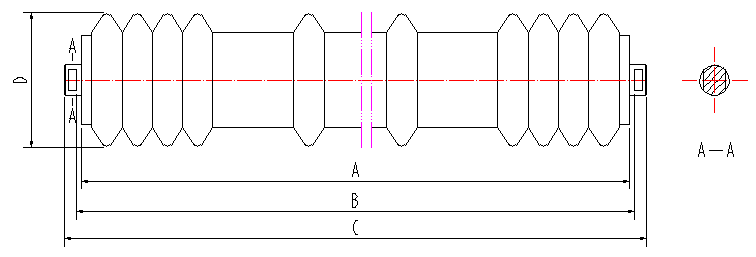 Afrikaans
Afrikaans  Albanian
Albanian  Amharic
Amharic  Arabic
Arabic  Armenian
Armenian  Azerbaijani
Azerbaijani  Basque
Basque  Belarusian
Belarusian  Bengali
Bengali  Bosnian
Bosnian  Bulgarian
Bulgarian  Catalan
Catalan  Cebuano
Cebuano  Corsican
Corsican  Croatian
Croatian  Czech
Czech  Danish
Danish  Dutch
Dutch  English
English  Esperanto
Esperanto  Estonian
Estonian  Finnish
Finnish  French
French  Frisian
Frisian  Galician
Galician  Georgian
Georgian  German
German  Greek
Greek  Gujarati
Gujarati  Haitian Creole
Haitian Creole  hausa
hausa  hawaiian
hawaiian  Hebrew
Hebrew  Hindi
Hindi  Miao
Miao  Hungarian
Hungarian  Icelandic
Icelandic  igbo
igbo  Indonesian
Indonesian  irish
irish  Italian
Italian  Japanese
Japanese  Javanese
Javanese  Kannada
Kannada  kazakh
kazakh  Khmer
Khmer  Rwandese
Rwandese  Korean
Korean  Kurdish
Kurdish  Kyrgyz
Kyrgyz  Lao
Lao  Latin
Latin  Latvian
Latvian  Lithuanian
Lithuanian  Luxembourgish
Luxembourgish  Macedonian
Macedonian  Malgashi
Malgashi  Malay
Malay  Malayalam
Malayalam  Maltese
Maltese  Maori
Maori  Marathi
Marathi  Mongolian
Mongolian  Myanmar
Myanmar  Nepali
Nepali  Norwegian
Norwegian  Norwegian
Norwegian  Occitan
Occitan  Pashto
Pashto  Persian
Persian  Polish
Polish  Portuguese
Portuguese  Punjabi
Punjabi  Romanian
Romanian  Russian
Russian  Samoan
Samoan  Scottish Gaelic
Scottish Gaelic  Serbian
Serbian  Sesotho
Sesotho  Shona
Shona  Sindhi
Sindhi  Sinhala
Sinhala  Slovak
Slovak  Slovenian
Slovenian  Somali
Somali  Spanish
Spanish  Sundanese
Sundanese  Swahili
Swahili  Swedish
Swedish  Tagalog
Tagalog  Tajik
Tajik  Tamil
Tamil  Tatar
Tatar  Telugu
Telugu  Thai
Thai  Turkish
Turkish  Turkmen
Turkmen  Ukrainian
Ukrainian  Urdu
Urdu  Uighur
Uighur  Uzbek
Uzbek  Vietnamese
Vietnamese  Welsh
Welsh  Bantu
Bantu  Yiddish
Yiddish  Yoruba
Yoruba  Zulu
Zulu conveyor belt roller types
Types of Conveyor Belt Rollers
Conveyor belt systems are an essential component in many industries, facilitating the movement of materials from one point to another. At the heart of these systems are the conveyor belt rollers, which play a crucial role in ensuring the smooth and efficient operation of the conveyor system. There are various types of conveyor belt rollers, each designed to meet specific operational needs and environmental conditions. Understanding these types can help businesses optimize their material handling processes.
1. Idler Rollers
Idler rollers are one of the most common types used in conveyor systems. They are designed to support the conveyor belt and are found in various configurations, such as trough, flat, and return idlers. Trough idlers, which have a V-shaped design, help in forming a trough to carry bulk materials more efficiently. This design minimizes spillage and helps in stabilizing the load. On the other hand, flat idlers are used in applications where the belt needs to run flat, typically in lighter-duty applications. Return idlers support the belt during its return journey, ensuring that it remains properly aligned.
2. Drive Rollers
Drive rollers are essential for moving the conveyor belt. They are powered rollers that provide the necessary force for the belt to move. Drive rollers can be designed with various surface treatments, such as rubber lagging, to enhance grip and reduce slippage. The size and power of the drive roller directly influence the conveyor's speed and load-carrying capacity. Depending on the application, businesses can choose between direct drive systems and indirect drive systems, where the drive force is transmitted through belts or chains.
conveyor belt roller types

Return rollers are used to support the empty portion of the conveyor belt as it returns to the loading area. These rollers often have a cylindrical shape and can be equipped with various features to minimize friction and wear on the belt. Properly designed return rollers can help reduce the overall operational costs by minimizing energy consumption and preventing damage to the belt.
4. Impact Rollers
In applications where heavy materials are loaded onto the conveyor belt, impact rollers are crucial. These rollers are strategically placed at loading points to absorb the shock of falling materials and protect the belt from damage. Typically constructed with robust materials and heavy-duty bearings, impact rollers enhance the longevity of the conveyor system and reduce maintenance costs.
5. Self-Aligning Rollers
Misalignment of the conveyor belt can lead to significant operational issues, including belt wear and material spillage. Self-aligning rollers are designed to ensure that the belt remains properly centered on the rollers. They feature a design that allows for automatic adjustment, which helps prevent tracking problems and increases the overall efficiency of the conveyor system.
Conclusion
Selecting the right type of conveyor belt roller is critical for ensuring the efficiency and longevity of a conveyor system. With options ranging from idler rollers to drive and impact rollers, businesses must evaluate their material handling needs to determine the best solutions. By investing in the appropriate roller types, companies can improve productivity, reduce downtime, and enhance their overall operational efficiency. As technology continues to evolve, we can expect even more innovations in conveyor roller designs, making them an indispensable part of industrial operations.
-
Revolutionizing Conveyor Reliability with Advanced Rubber Lagging PulleysNewsJul.22,2025
-
Powering Precision and Durability with Expert Manufacturers of Conveyor ComponentsNewsJul.22,2025
-
Optimizing Conveyor Systems with Advanced Conveyor AccessoriesNewsJul.22,2025
-
Maximize Conveyor Efficiency with Quality Conveyor Idler PulleysNewsJul.22,2025
-
Future-Proof Your Conveyor System with High-Performance Polyurethane RollerNewsJul.22,2025
-
Driving Efficiency Forward with Quality Idlers and RollersNewsJul.22,2025





























